Anxious Instantiations
Anxious Instantiations
If I listened closely it was only vague numbers and vaguer facts, completely detached from how such business transactions took place in the actual world, how they struck people’s lives, how they cut into the earth. If I understood correctly, the divisions were entertainment, food and biotechnology, natural resources, banking and investment, communications and what seems to be some sort of private military, though no one directly said so. The various euphemisms for killing were not particularly ingenious. [...] And yet as I listened I couldn’t hear even a smudge of reality in his approach, in his economic ontology, in his pure spun computer models of pure fantasy, where only money mattered and everything else was either a resource of an obstacle. All he talked about was the future and there was no future. They would be no future if people like this, language like this, was in charge.
— Jacob Wren, Rich and Poor 1
This text is available in English only.
During the keynote session of the Anxious to Secure stream at transmediale/conversationpiece, Isabell Lorey, author of State of Insecurity: Government of the Precarious, and David Lyon, author of Surveillance After Snowden, presented their respective takes on precarity, insecurity, and governance under the political-economic order of neoliberalism. In what follows, we try to make explicit some questions that the session provoked for us, outline our response from a geographic point of view outside Europe, and suggest—by way of a somewhat oblique but especially relevant literary refrain—a concept of anxiety that might enable and embolden ongoing action against the violence of precarization and the insecurities created by the surveillance state.
1 / Anxious Questions
Our first question addresses the transmediale framework more than the session itself: what does it mean to make the thematic point of departure “anxiety”? Let’s be clear: we’re not saying whether one should or shouldn’t start with anxiety, we just want to ask about how this point of departure, reference, or focus, creates a particular navigational logic with respect to the discourse and the situation one is describing. The main concern, and one which we could detect in various “Conversation Pieces,” is that the concept of anxiety, however diverse its experiential qualities, seems almost indelibly bound to assumptions about a normative condition. To say this another way: anxiety has some heavy conceptual baggage. Linguistically, culturally, and even politically, it is assumed to be an aberrant condition. Of course, anyone who saw conversationpiece will know that the contemporary “normative” condition of anxiety is one of the key reasons to begin with anxiety: even if it once was, it is no longer an aberration but the norm. Anxiety is now a ubiquitous, dominant condition from which relief should not be expected. This increasingly normative condition of anxiety, and the precarity which it forges, then begins to verge, on the one hand, toward a kind of existential condition absent of any political history and, on the other, toward an absolute situation wherein the various means of evasion, escape, and counter-politics are dismissed as redundant in advance. In what follows, we want to pay attention to the ways in which anxiety is normalized and the ways in which “normalization” becomes operative as an index of anxiety.
Our second question, which assumes a certain mode of exhaustion after the #Brexit vote and the increasingly common appearance of fascist discourse in Western Europe and North America, is whether or not “neoliberalism” still exists. Or, perhaps more correctly, whether capitalism and neoliberalism are sufficient terms to describe the terrifying admixture of political apathy, fascist excitement, climate migration, and ecological collapse currently unfolding on the European political horizon. In Indonesia, an anxious geography to which we will turn our attention below, we’ve had some difficulty in recent years trying to map the strange and often contradictory assemblage of forces, actors, and interests onto an abstract territory of political economy. But we get the feeling this might be true for a number of other thinkers and researchers elsewhere. What’s at stake in the descriptor of neoliberalism? Is the generic description of the neoliberal annihilation of society worth the trade-off for the short-hand thinking it creates about localized instantiations of political and economic violence? Is capitalism so far gone, irreverent, unpredictable, and omnicidal that our clinging to “neoliberalism” is more a sign of nostalgia than analysis? We’re definitely not sure, but we’re concerned that the umbrella under which various forms of violence were, for a time, understood as part and parcel of the same neoliberal logic may be, in part, obscuring the view of an even more terrifying political economic horizon.
Our third question is about the logic of instantiation. How does a fine-grained, precise knowledge of the instantiation of a given diagram of violence—say, for example, the diagram of neoliberalism, which we heuristically take on here—inform the articulation of a diagram as a tool of resistance? Or, plainly, how does the struggle on the ground inform a description of violence (whether diagrammatic or not) that would otherwise remain too abstract to be practically useful? In what follows, we try to traverse a line through an anxious geography in order to explore the discourses of security and insecurity, precarity and precarization, from a complimentary, if at times exacerbated, point of view.
2 / Anxious Geographies
The two of us didn’t watch conversationpiece in the auditorium of the HKW, but online, via fiber cables, optical tubes, and micro-flickers of light. The lectures were a pause we were afforded while doing field work for our respective research projects in Indonesia. Thus, our appreciation of and response to the anxieties of security presented in this keynote was refracted through a particularly intense geographic lens that both distorted and clarified the terms of discussion set forth by Lorey and Lyon. Moving from more theoretical questions to an experiential description of the anxieties of security where we work, several processes are both illustrative of, but also in their scale and violence in excess of, the anxieties of security described. In trying to think these events alongside the theoretical debate, we hope to extend the struggles against the precarity and insecurity of urban residents in Jakarta and rural inhabitants of Sumatra and Kalimantan (Borneo) into a discourse which has largely been developed in Europe.
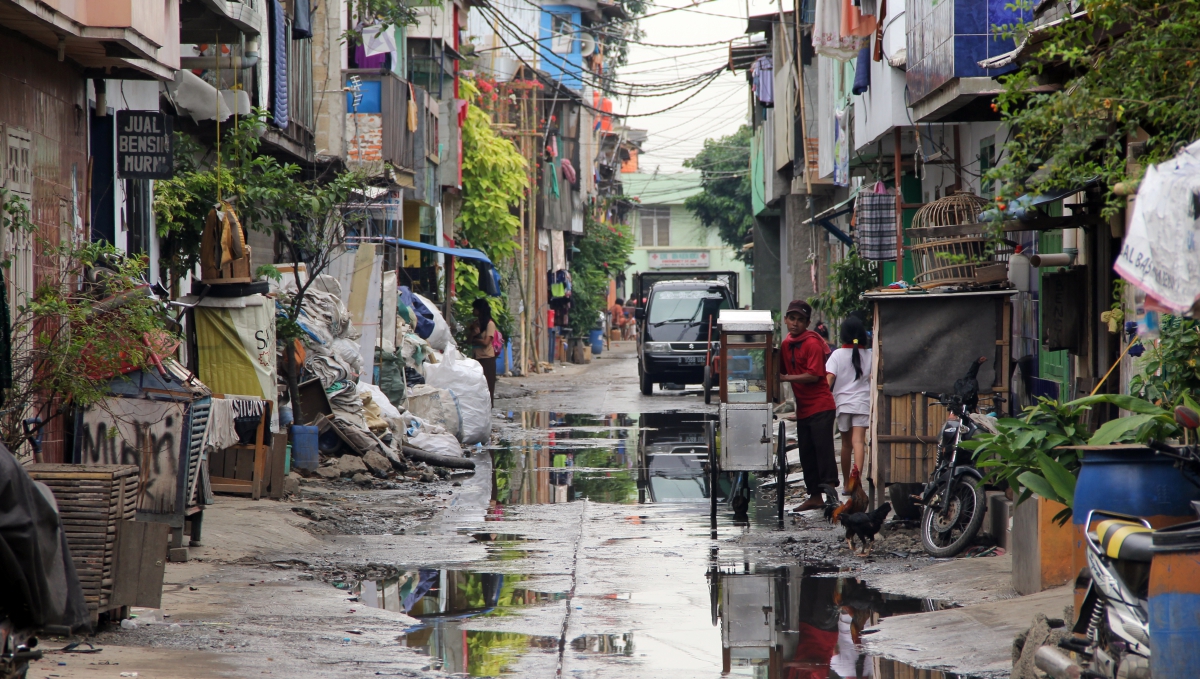
In her 2015 book State of Insecurity, Lorey writes: “At many moments in the processes of precarization, something unforeseen, contingent, and also in this sense precarious arises. It is this aspect of precarization that harbours the potential of refusal, producing at the same time a re-composition of work and life, of a sociality that is not in this way, not immediately, not so quickly, perhaps even not at all, capitalizable. These kind of re-compositions can affect interruptions in the process of normalization, in other words, in the continuity of exploitability and governability.”2 This was a point she also made explicitly in her lecture. We can relate this to the situation in Indonesia as we have encountered it since February 2016.
Over the past several years, the government of Jakarta has embarked on an ambitious plan to “normalize” the city; this project involves three main elements: (1) the “normalization” of work, or the movement of informal jobs into a formal and taxable economy; (2) the “normalization” of housing, or the movement of kampung [a difficult-to-formalize, typically auto-constructed settlement within the city] residents into mid-rise concrete block apartments; and, (3) the “normalization” of the river systems, or the channeling of the city’s main rivers through an extraordinary combination of land grabs, housing demolition, concretization, and infrastructure investment. While nominally presented as a way of increasing the functionality of the city, normalization is in essence an aesthetic project of expulsion. While poverty and urbanization go hand in hand, the project of “normalization” is a strategy committed to their definitive, violent decoupling; there will be poor people, and their will be urbanism, but they will be forcefully segregated. It is as though the process is meant to repeat as many times as necessary until this social sorting takes permanent hold.
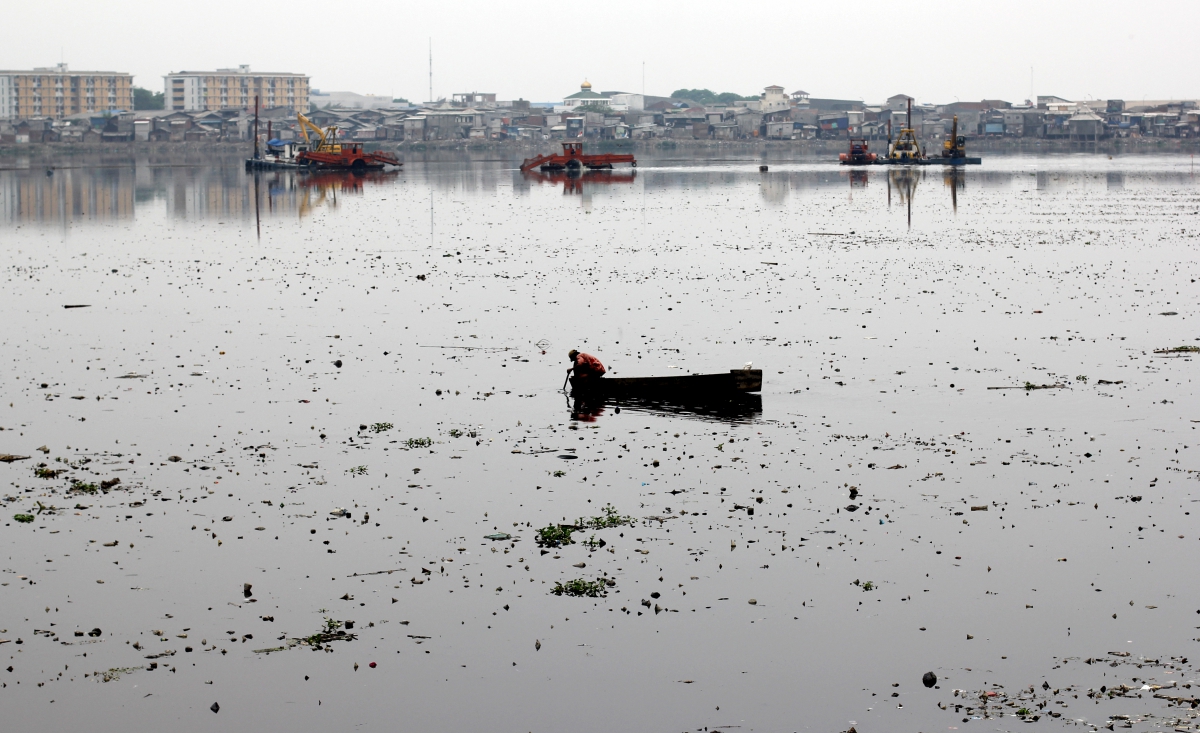
While precarity and insecurity in a European context are well-defined, in Jakarta, as in many cities of the apparent global South, new waves of “normalization” must be understood as an attack on the informal labor of care and collectivity that have created and maintained a social safety net for the urban poor thus far. This is to say “normalization” is a process that ensures the elimination of the urban poor from the economic centers of the city; it is a process of expulsion, as Saskia Sassen has well described.3 However, it is the very proximity to these centers of economic activity, leading to ad hoc economic opportunities, as well as the mixture of entrepreneurial labor, opportunism, and solidarity that make life viable for kampung residents in the city. By forcing these residents to relocate to high-rises at the edge of the city, the activity of “normalization,” while allegedly devised to eliminate urban poverty, in fact accords to a much more brutal logic designed to eliminate the poor themselves. As a result of such violence, we can begin to discover, much as Lorey describes, “Social practices that are oriented not solely to the self and one’s own milieu, but rather to living together and to common political action, recede ever more into the background and become ever less imaginable as a lived reality.”4
Among the cruel vectors within this spectacular sorting process is the constant refrain in the media that the expulsions are being conducted for the benefit of those expelled. Often tied to discourses of risk reduction, infrastructure fragility, or urban upgrading, the expulsion of the urban poor under “normalization” appropriates a pastoral logic of governmentality as its public face, only to remove this mask once residents have been coerced into new and typically untenable settlements, revealing the logic of precarization at stake in the process. With one of the highest rates of urbanization in the world, the fanatical hope of cleansing the city of urban poverty by repeatedly attacking and antagonizing the urban poor is ruthlessly cynical. However, even more cynical is another common refrain made popular by city officials: these residents—the urban poor living in kampungs or other difficult-to-formalize socio-spatial arrangements—should just go back where they came from.
With approximately 17,000 islands and a population of 240 million, the archipelago of Indonesia is a geographically massive country; some of its major islands, such as Borneo, Sumatra, and New Guinea, are among the largest in the world. While the megacity of Jakarta is suffocating in the smog from tens of millions of cars crawling through its interminably congested streets, these faraway islands can no longer provide an opportunity for going back to the nurturing countryside. This is because—starting with a development grant from the World Bank in the late 1970s, and intensifying rapidly ever since Suharto’s downfall in the late 90s, and the influx of international palm oil companies in the early 2000s—a voraciously corrupt state-company-apparatus has transformed the region from one of the most diverse rainforest ecologies in the world to an unfathomably large carpet of monoculture oil palm plantations. As a handful of the super-rich increase their financial and political power, the livelihoods of countless human and nonhuman inhabitants depending on the natural wealth of the Indonesian countryside are discarded into precarity.
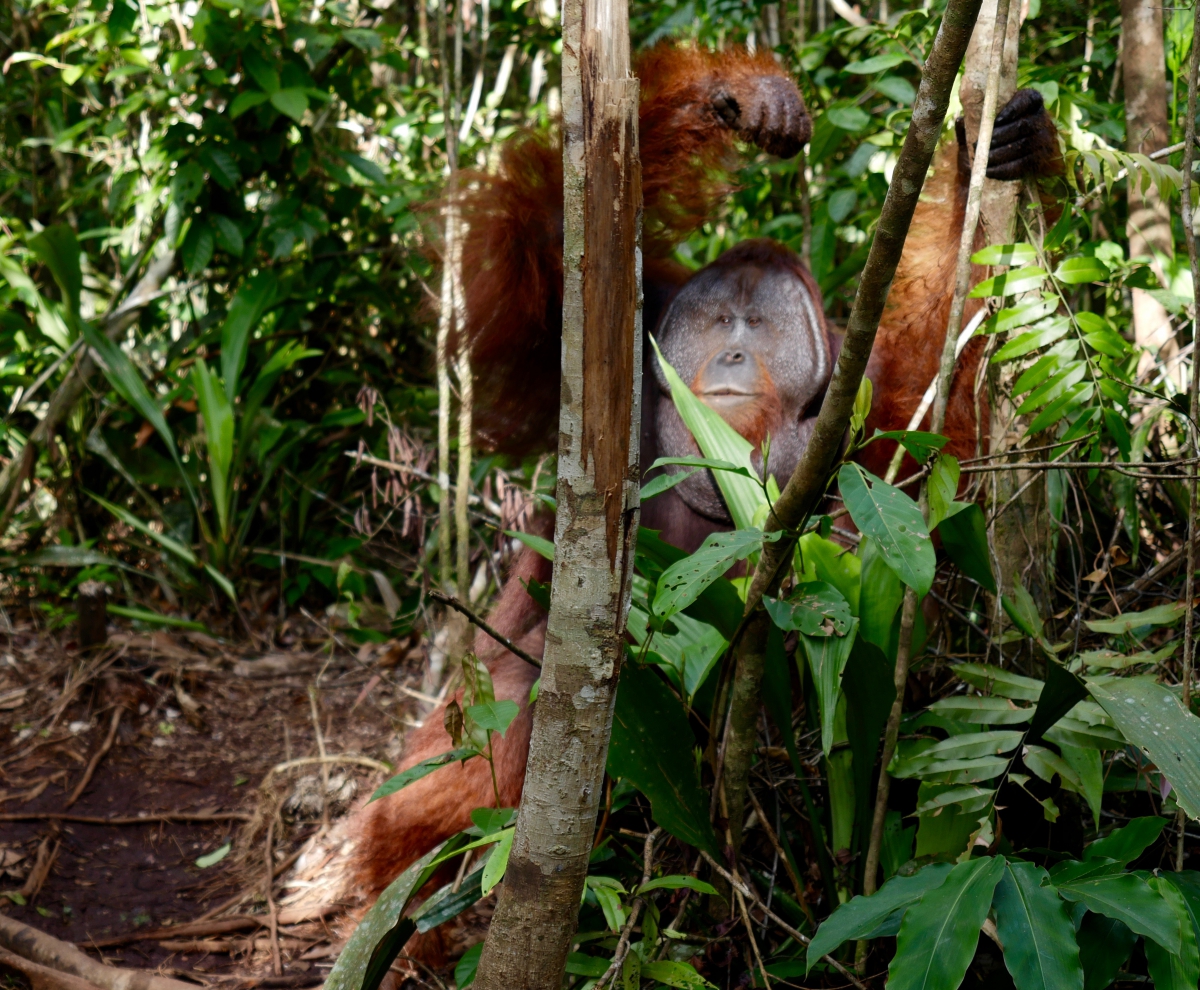
According to political scientist Edward Aspinall, there are more billionaires in Indonesia than in China or India. As he writes in a recent article on the financial inequality and political culture of the country, “This growing concentration of wealth is part of a broad global trend, but one factor accelerating it in Indonesia was the commodity boom that occurred during the 2000s, when prices and production of key commodities like coal and palm oil rose sharply.”5 Indeed, with over ten million hectares of oil palm plantations, Indonesia is the world’s largest producer of crude palm oil and its greatest international exporter. This vector of accumulation has no end is in sight, as current estimates predict that the demand for palm oil will double in the next decade, and eventually even triple in the second half of this century.
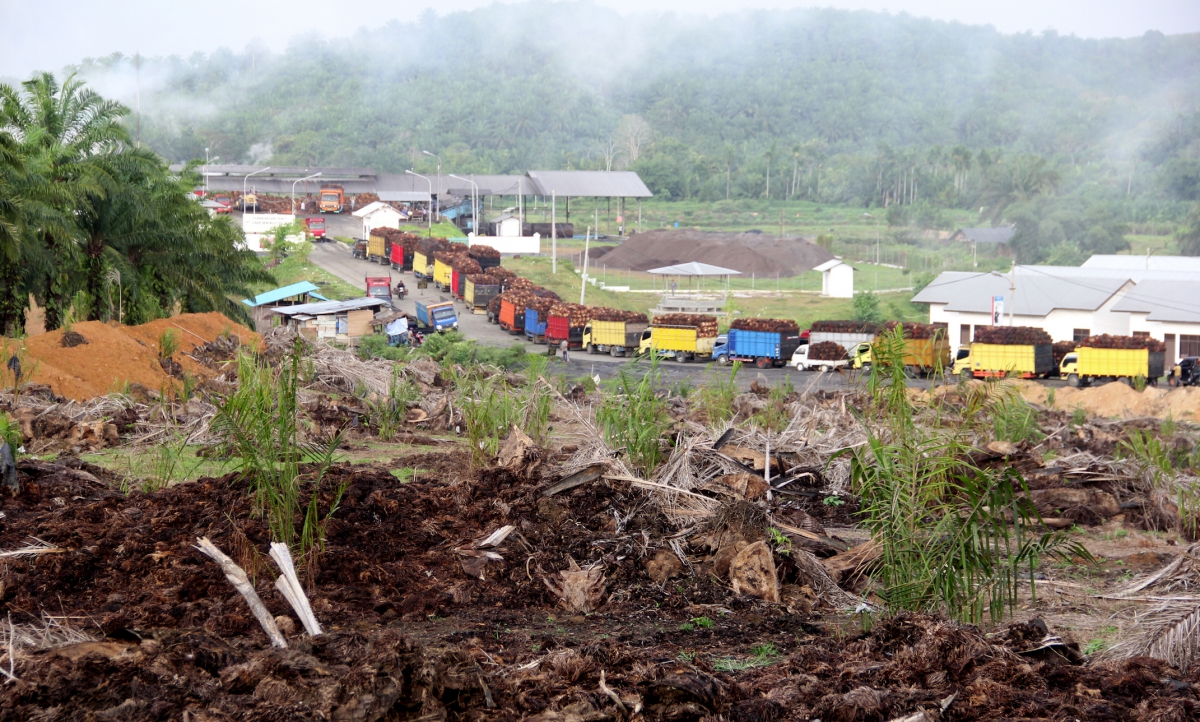
But while elite skyscrapers and shopping malls are mushrooming in Jakarta as a result of this accumulation, and consumers in other parts of the world are luxuriating with the manufactured goods made affordable to them by the low cost of palm oil, Indonesian people on these plantation islands are caught in an intense struggle involving land grabs, illegal concessions, complex environmental degradation, and increasingly brutal physical violence. Frequently unable to carry on with their traditional practices of subsistence farming and often never receiving the compensation initially promised, people are scrambling to get a crumb of the cake. Many communities have organized collective actions defending their land rights; this brought about cultivation schemes such as the so-called Kebun nucleus / Kebun plasma distribution, which intends to provide local farmers with access to up to thirty percent of land that was cleared for oil palm agriculture. Usually, however, the multinational or local companies keep the fertile land to themselves, granting the small farmers access merely to second or third-grade land. In many areas in South Kalimantan, for example, the land has become so scarce that it is very difficult to open up any new plantations. Desperate for income and under terrible existential pressure from the developments in their surroundings, people have begun to turn even the rivers and the lakes into plantations. But as these sites are too wet for the palm trees to grow, they quickly die, wealth never comes, the ecosystem is ruined, and what remains are blasted landscapes.6
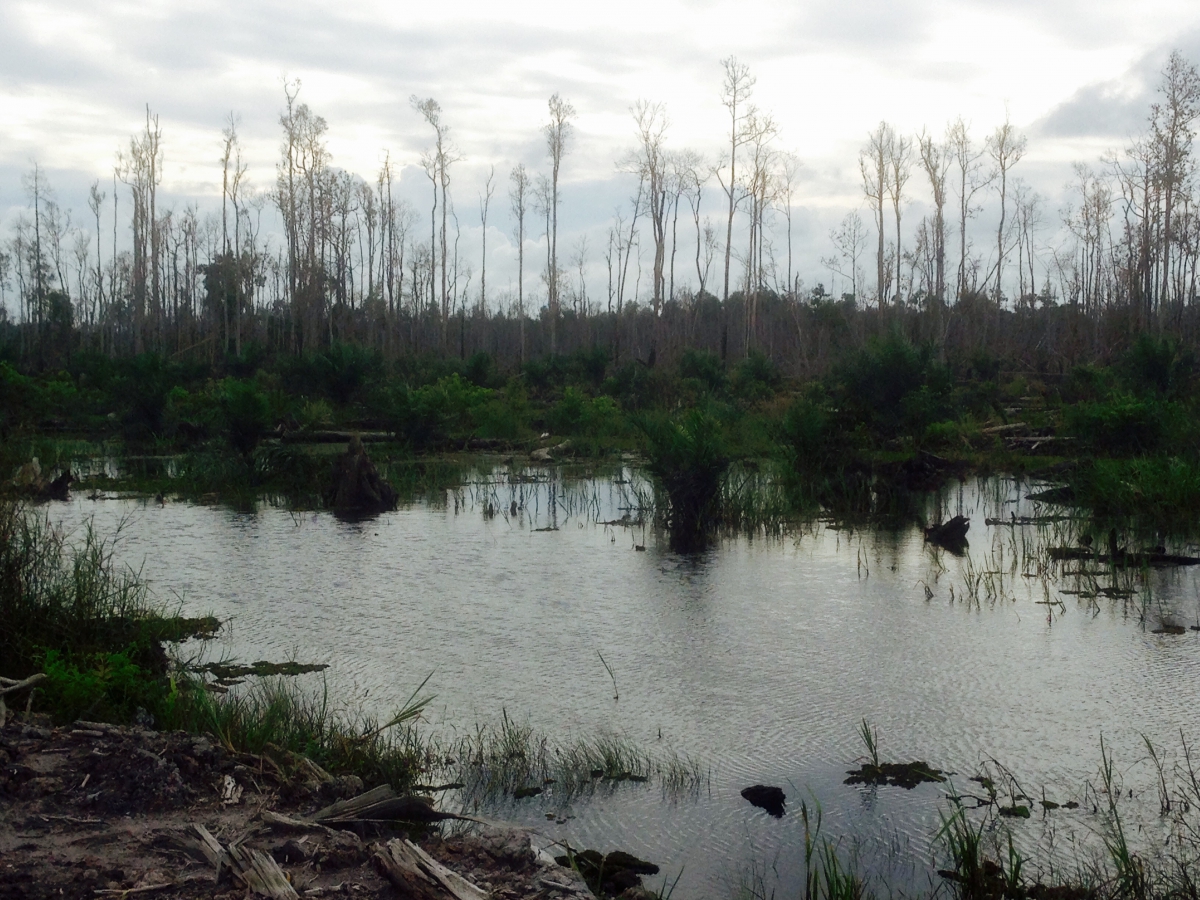
For Lorey, “The art of governing currently consists of balancing a maximum of precarization, which probably cannot be exactly calculated, with a minimum of safeguarding to ensure that the minimum is secured at this threshold.”7 Under neoliberalism’s economization of everything the act of valuing of the invaluable is one of the most important strategies—and at the same time one of its most violent.8 In the context of a growing green economy on the one hand and the ongoing precarization—not to say erasure—of rainforest ecologies on the other hand, a fragile balance is increasingly attempted through so-called “ecosystem services” assessments. These pose questions such as, what is the financial value of rainforests in terms of climate mitigation when forests are not cut down for wood or plantations or to clear the land for mining? In Indonesia, such calculations have been conducted as part of the carbon sequestration program REDD+ and the attendant Forest Ecosystem Valuation Study (FEVS). According to a summary of this study, “By providing quantitative evidence on the values provided by nature, the FEVS seeks to significantly increase investments in forest ecosystems and promote the sustainable management of these natural resources, leading to higher social equity and sustained long-term economic growth.” While one of the study’s stated core aims is the enhancement of the livelihood of the rural population, traditionally, as Michael Goldman shows in Imperial Nature, his brilliant ethnography of the World Bank, progress through investment—especially as it involves government and development agencies—does not have the most laudable record.9 It remains to be seen what forest financialization as nature capital will amount to in this world of accelerated speculation, endless destruction, and ongoing precarization.
In terms of environmental rights, many of the environmental activists we’ve spoken to in Indonesia still affirm that, at least theoretically, the national constitution provides a relatively progressive legal framework. Constitutionally, the State owns the land as a guardian of the land and the people. If the State does sell land to a plantation company, its responsibility becomes deferred to the company; yet, the State also remains responsible to guarantee the land’s proper treatment. In reality, however, the enforcement of such laws presents a serious lack. One case in point was the insufficient national and local government response to the massive forest fires raging across the entire country in the fall of 2015, especially in Borneo and Sumatra, where rainforests are rooted in the carbon-saturated and extremely flammable peat soils. To relay this concern by way of a concrete story: a forester in South Kalimantan, who with his small team has been planting 500,000 trees over the last twenty years, saw all but ten percent of his life’s work fall victim to last year’s fires. When the local government did nothing to intervene, the men had no choice but to move to the forest themselves, doing nothing else for several months than digging wells and incessantly pumping water into the flames from small plastic rucksacks carried on their backs. In Europe, we may think that the withdrawal of governmental care for our bodies is a relatively recent phenomenon, but bodies deemed to be “expendable” by corporate and state agents have long been organizing communal care, mutual aid, and ecological defense on the frontiers of capitalist imperialism in Southeast Asia.
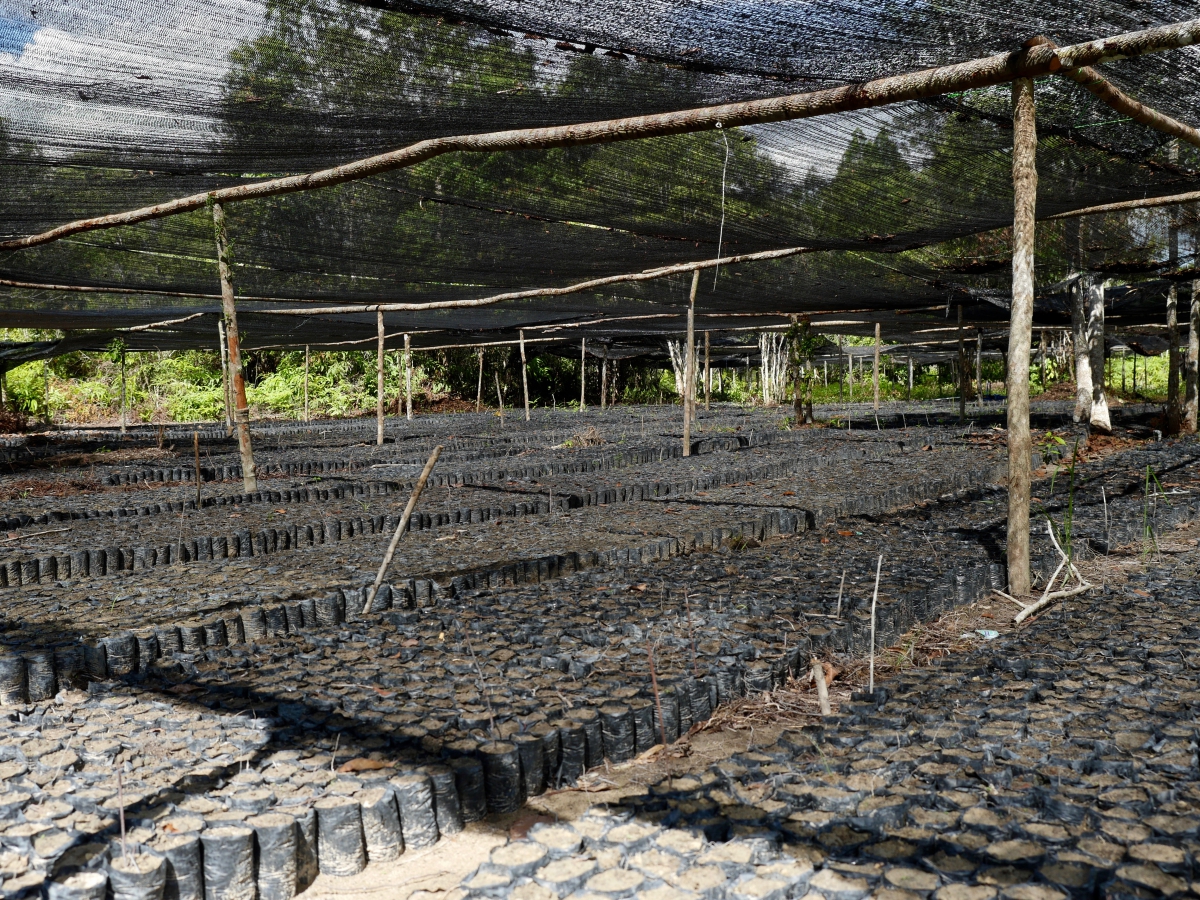
It seems as though a capitalist class operating in the archipelago is anxious to grab—that is, ready and poised to identify, expropriate, and exploit land that is best suited for a simplification into oil palm plantations. On the ground, residents we’ve talked to describe this experience as living inside a “war zone.” Other residents and local activists are set to advance a lawsuit on behalf of “future generations” to protect traditional lands threatened by development. It is surveillance that produces such a war for territory; however, it is not the typology of surveillance typically debated in North Atlantic symposia, where private rights and personal freedoms tend to be weighed in some proportion against the importance of security and crime prevention. This form of surveillance has, from the outset, eliminated the individual as a consideration because it is surveilling land and its productivity more than any individual or their family’s welfare or livelihood. The outcome is simple: optimized expulsions and increased development. Or, seen from the point of view of those subject to such brutalizing and optimizing modes of surveillance: a “war zone.”
From this perspective, it is important to emphasize some crucial reflections made by David Lyon during his lecture on “life mining” after Snowden. Focusing mainly on the transformations brought about by computerized surveillance in the individual’s workplace, Lyon first introduced his ideas according to a structure of “the three Vs”—Velocity, Volume, and Variety—the strategies, he argued, used to produce portraits of individuals by extracting and calculating their metadata. While we agree with Lyon’s general caution that “life on the internet requires a rethinking what it means to be an individual and […] the responsibilities within internet life,” it was his invocation of two other “V-words,” brought up later in the lecture, that we want to recall here: the notions of value and vulnerability. If surveillance capitalism is indeed poised to erode notions of mutualism and reciprocity, we hope that the debates regarding such a “complete collapse” (Lyon’s phrase) can move well beyond liberal concerns regarding individual, self-securitizing subjectivities; these discussions would benefit from a greater attention to the broader questions of access to data, remote sensing technologies, and the entire apparatus of valuation and vulnerability that is currently being operated as a means for expulsion in the tropical rainforests of Indonesia and so many other regions in this world. If discussions of surveillance remain solely within the framework of individualized, liberal rights, we see little chance of combatting or confronting the interminable violence enacted in the name of security.
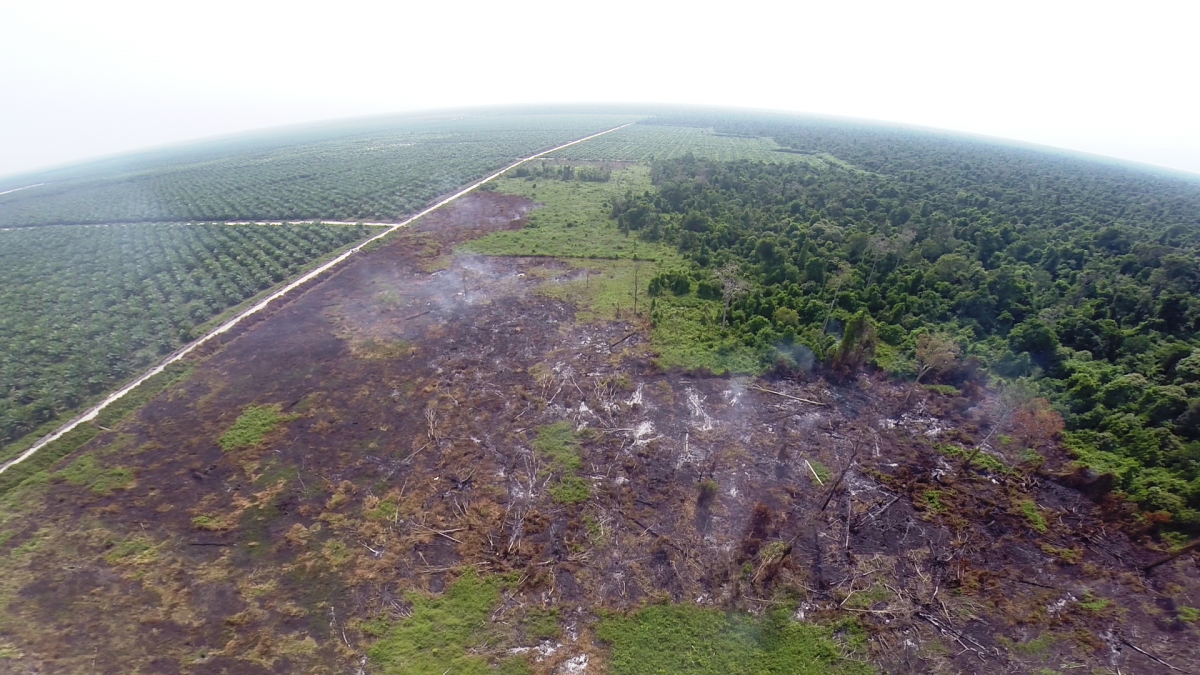
3 / Anxious Narratives
For us, the Canadian writer Jacob Wren’s recently published Rich and Poor (2016) is another way of mapping the elusive contours of capitalist anxiety across two apparently opposing figures—one rich, one poor—who constitute the schizo-protagonists of the novel. Oscillating between the narrative justifications offered by a sociopathic CEO of “the world’s largest company,” and the revenge-crazed dishwasher committed only to the “symbolic” murder of his incomprehensibly wealthy foil, Rich and Poor braids various strands of thought and reflection on precarity and insecurity into an anxious but compelling plot.
The CEO begins the novel by describing his own ambition, charm, and the possibilities afforded him by his fortunate place in history.
We can say that some people are rich because others are poor but it changes nothing.
The roulette wheel spins and the numbers that come up are the ones that win. […].
And yet it’s important to believe there is something you can do, to lie to yourself a little, because then at least you have a shot.10
While he remains agnostic about the consequences of such historical contingencies, he is nevertheless certain that his own merit within the maelstrom of economic forces remains irreproachable. The CEO has, in his self-estimation, earned his security; and, although this security has come at the expense of a seemingly endless precarization of workers, communities, and ecologies, he is sure that if the tables were by chance turned, the poor would be no less ruthless in securing their lot against him.
The “poor” figure, a dishwasher-assassin, begins from a rather different perspective.
I will kill him. It will solve nothing and help no one, but for me at least, it will bring something to an end. The poor must kill the rich, one at a time, at every opportunity. One man kills another and the message is clear, your wealth is cruel and unnatural. You can put fences, guards and dogs around your home, so you are like a prisoner in your own life, but if you are rich you will live in fear. You will fear your servants. You will look out the window of your limousine and, at every traffic light, wonder if each and every passerby has a gun and a bullet with your name on it. It is only that the killing must be completely random. The victims having nothing in common other than their wealth, the killers nothing in common other than poverty. The message should be clear: if you are rich, you can be killed at anytime. […] We would only have to kill ten to start, to strike fear in the hearts of every billionaire in the world.11
Whereas, for the CEO, the contingent distribution of wealth acts as a means to psychologically securitize his affluence and thereby justify his cruelty (i.e. “they would do the same to me if they had the chance”), for the dishwasher-assassin, a redistribution of anxiety by way of random acts of violence—namely, murders of the extremely wealthy—would set in motion a wave of panic capable of destabilizing the psychosocial immunity constructed by the rich. In both cases, the diagram of violence is drawn simultaneously by the desire for a security gained by way of precarization (with the more traditional way of describing such a situation being class war).
Following the theoretical work of Lorey and Lyon and these literary provocations by Wren, we might conclude with the statement that class war isn’t quite what it used to be. Precarization frustrates many of the so-called “organic associations” which once helped organized labor get organized; meanwhile, surveillance makes “possible criminals” of us all while enhancing the speculative capacities of those governments and corporations intending to do us further harm. We hope with these remarks we’ve added some voices, precarious but in constant struggle, from geographies that have so far remained on the margin of the discussion, and from local instantiations of precarization that require further co-research and solidarity. It is alongside, inside, and among these localized struggles that we believe intolerable globalized precarization can be disputed and disrupted, as Lorey says, “to no longer be governed and no longer govern oneself in this way, at this price.”12
- 1. Jacob Wren, Rich and Poor (Toronto: Book Thug / Deparment of Narrative Studies, 2016), 48-9.
- 2. Isabell Lorey, States of Insecurity: Government of the Precarious (London: Verso, 2015), 104.
- 3. Saskia Sassen, Expulsions: Brutality & Complexity in the Global Economy (Cambridge: Harvard University, 2015).
- 4. Lorey, States of Insecurity, 90.
- 5. Edward Aspinall, “Democracy and Inequality in Indonesia,” Kyoto Review of Southeast Asia (March 2015); http://kyotoreview.org/issue-17/inequality-and-democracy-in-indonesia.
- 6. On the concept of “blasted landscapes,” see Anna Tsing, Friction: An Ethnography of Global Connection (New Jersey: Princeton University Press, 2007).
- 7. Lorey, States of Insecurity, 65.
- 8. Wendy Brown, Undoing the Demos: Neoliberalism’s Stealth Revolution (New York: Zone, 2014).
- 9. Michael Goldman, Imperial Nature: The World Bank and Struggles for Social Justice in the Age of Globalization (New Haven: Yale, 2004).
- 10. Wren, 10.
- 11. lbid., 10.
- 12. Lorey, State of Insecurity, 102.

